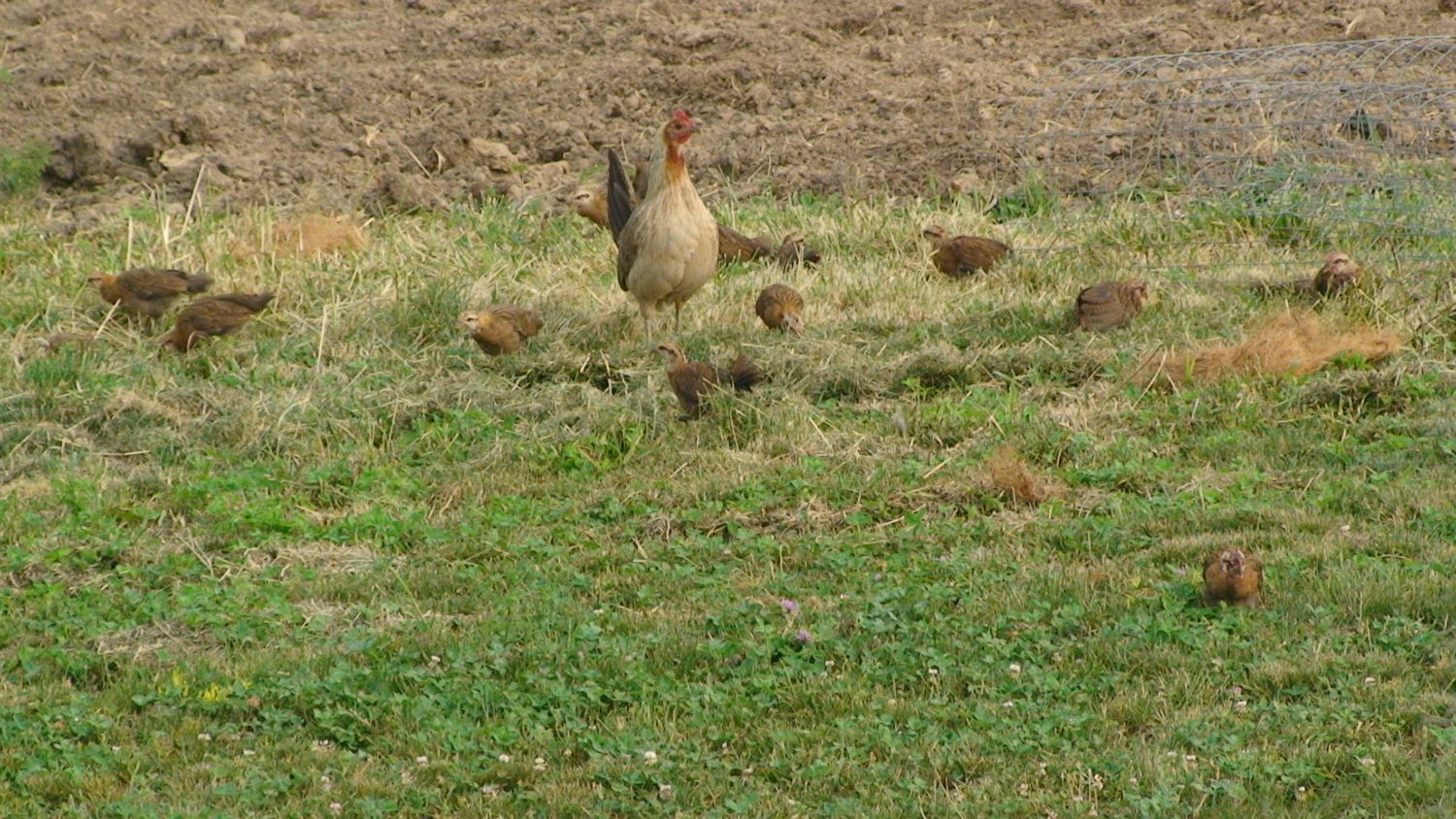This morning as going about business of releasing some of the free-range groups and walking down place with dog I came across a scene that plays itself out with my game broods, especially when then their daddy is not present. The chicks are approaching the age (5 to 6 weeks) where their mother would wean them (stop clucking) and they would begin moving about away from for part of day as she prepares for setting next clutch. While momma is busy setting next brood the offspring that I now call juveniles begin to associate with the harem master (dad). He and they have already imprinted on each other so they go about as a group. Dad will intervene on behalf of his juveniles when other flocks or predators are encountered. Mother will still call chicks to roost and sit over them at night and with large broods father will do same.
The scene was a battle royal. Of 15 surviving chicks, 7 are male and 6 where beating the crap out of each other. Four where in one pile and two in another. They were flogging each other just like adults would do but duration and intenstity is much greater than will be seen in either production breeds or wild jungle fowl. Battle duration exceeded 2 hours and continues as I write this. Such behavior is maladaptive outside of the gamefowl interests in my situation, considerable oversight will be needed to ensure predators do not go after distracted and / or weakened chicks today.
Later I will post a video showing part of what went on and show damage imparted on the little guys by each other.
The scene was a battle royal. Of 15 surviving chicks, 7 are male and 6 where beating the crap out of each other. Four where in one pile and two in another. They were flogging each other just like adults would do but duration and intenstity is much greater than will be seen in either production breeds or wild jungle fowl. Battle duration exceeded 2 hours and continues as I write this. Such behavior is maladaptive outside of the gamefowl interests in my situation, considerable oversight will be needed to ensure predators do not go after distracted and / or weakened chicks today.
Later I will post a video showing part of what went on and show damage imparted on the little guys by each other.







